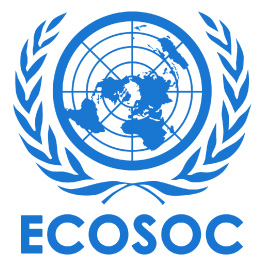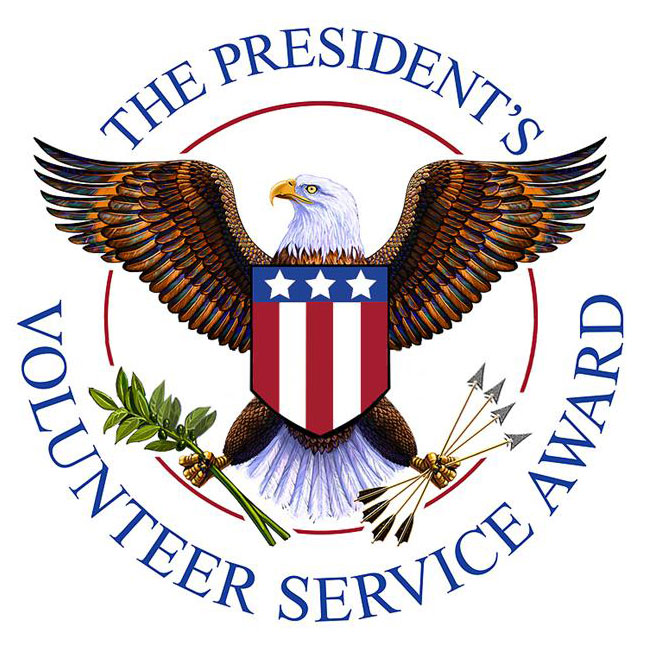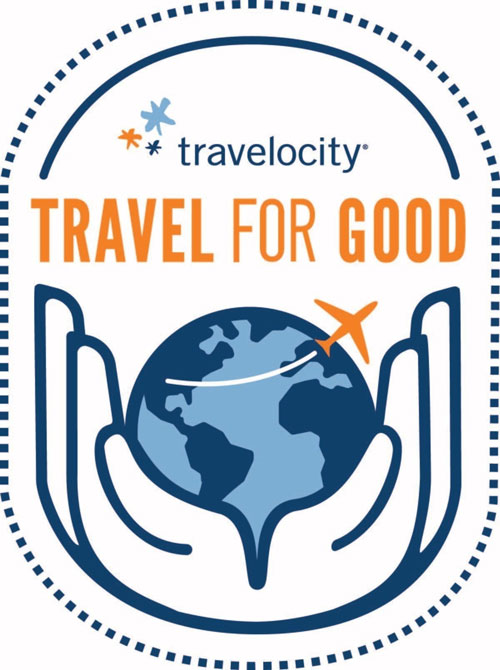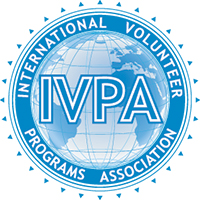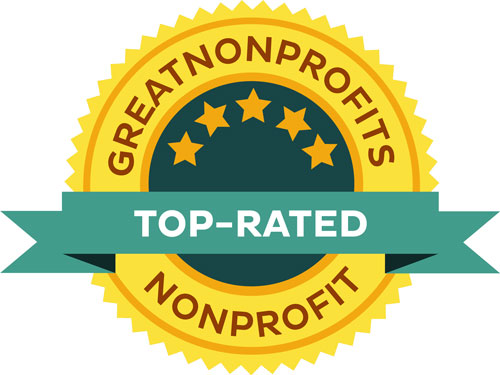New York Institute of Technology (NYIT) in Ghana with Globe Aware,
Happy Birthday to the Peace Corps, Student Volunteers from New York Institute of Technology (NYIT) in Ghana, A profile of Globe Aware, and a short doc on New Orleans.
New York Institute of Technology (NYIT) in Ghana with Globe Aware,
Happy Birthday to the Peace Corps, Student Volunteers from New York Institute of Technology (NYIT) in Ghana, A profile of Globe Aware, and a short doc on New Orleans.
International Herald Tribune features Globe Aware
Globe Aware was featured in a June, 2011 spotlight in the International Herald Tribune:
Globe Aware: Volunteer Vacation Take a trip that will last a lifetime.
"The habitual characteristics of vacations are quite notorious: Stress relief. A hiatus from your accustomed duties. The effortless Pleasures of relaxation, or they can be used to simply revitalize a relationship. Although these likings may be essential, your short-term journey can also benefit the world around you," writes Kimberly Haddad in Pasadena Magazine.
Ms. Haddad goes on to add that there are are a number of affordable volunteer vacations across the country that will allow the interested and inspired to travel to a unique destination "while giving back to the community. Whether it's environmental assistance, lending a kinding hand to a child's education or habitat restoration for wildlife,everyone has the opportunity to take part in an adventure with a purpose."
Included in her list of top volunteer vacation providers is Globe Aware:
“Globe Aware is a non-profit organization that organizes volunteer vacations in various parts of the world including Africa, Asia, Eastern Europe, and Latin America.
Globe Aware allows volunteer travelers the extraordinary opportunity to be involved in a community while gaining valuable knowledge about cultures and the foreign environments we may not be accustomed to. Set goals for yourself and work alongside locals and other volunteers in elaborate hands-on projects like working with disadvantaged children in India, building shade shelters for elephants in Thailand, and working with youngsters who suffer from Down Syndrome in Cuba.
Some volunteer vacation organizations do not offer room and board, but Globe Aware is one of the few that do. Although it may not be as extravagant as you wish, the cost of the program includes housing accommodations and traditional style meals during your stay.”
International Herald Tribune features Globe Aware
Globe Aware was featured in a June, 2011 spotlight in the International Herald Tribune:
How to Change the World: Globe Aware featured in WSJ
Kelly Greene, a staff reporter for The Wall Street Journal in New York, considered how individuals can change the world on a limited budget. She notes that one of the the best methods was through a volunteer vacation with Globe Aware. Read the Dec. 20, 2010 article in its entirety:
How to Change the World…
…Whatever the size of your wallet. These ideas, with budgets from $20 to $20,000, can help better the lives of others—and your own.
By KELLY GREENE
Got any plans for next week? Perhaps you could begin changing the world.
Yes, household budgets remain tight. But you don't have to be a lottery winner to make a difference in your community or halfway around the globe. People who are winding down first or primary careers and looking for new directions are discovering that for the cost of a weekend getaway, they can help change the world. Or start to.
Bob and Jo Link, for instance, retirees in Portland, Ore., serve on a nonprofit board that awards scholarships in Belize. Mr. Link, age 69, also troubleshoots computer problems for African refugees. This after the couple spent two years in the Peace Corps, helped with Hurricane Katrina cleanup, assembled computers for schools in Guatemala and worked with deaf orphans in Peru.
The cost to them? A few plane tickets, some scholarship donations and sweat equity.
"When you do this kind of stuff, you get back more than you really expect," Mr. Link says. "A lot of people wouldn't, or couldn't, put two years into the Peace Corps, but they could afford to spend a week in Peru."
We decided to look for ways that people, whatever the size of their savings, can change the lives of others—and their own. So go ahead: Pick one of the following budgets and write it on your calendar: "CTW."
$100 and Under
SERVICE PROGRAMS: In some cases, you actually can get paid while you're helping to make a difference.
With the help of DonorsChoose, students in a school in New Haven, Conn., received new musical instruments to form a school band.
The Links, for instance, earned $300 apiece each month in the Peace Corps, where about 7% of the organization's volunteers last year were age 50-plus. Closer to home, AmeriCorps, one of the largest national-service programs, is aiming for 10% of its 85,000 participants to be at least 55 years old—up from 4% in fiscal 2009.
AmeriCorps volunteers receive federal stipends averaging $11,800 for a commitment of 10 months to a year. They can also receive education grants of as much as $5,350, which, starting this year, they can transfer to their grandchildren, says Patrick Corvington, chief executive of the Corporation for National and Community Service, the agency that runs AmeriCorps. Work varies from part-time service in a volunteer's own community to full-time opportunities across the country. Options include helping to rebuild communities on the Gulf Coast and installing solar-electric systems in low-income California neighborhoods.
BECOME A LENDER: For what you spend today on lunch, "microfinance" allows you to play a big role in jump-starting modest entrepreneurial undertakings around the world—whether it's boosting inventory at a produce stand in Dar Es Salaam, Tanzania, or providing additional nets to fishermen in Cambodia.
Farmers in Peru, with assistance from Heifer International, are able to afford cattle to help plow and seed their fields.
If you're interested in lending to an individual entrepreneur overseas, Kiva.org lets you choose the borrower on its website. If the loans are paid back, you can fund another loan, donate the proceeds to Kiva or get your money back. DonorsChoose.org, where you can pick a classroom project to fund with as little as $1, sifts proposals by cost, school poverty level and subject. Requests might include $140 for dry-erase markers or $2,000 for camcorders and laptops for budding filmmakers.
Heifer International, through which $20 buys a flock of chickens or $5,000 delivers an "ark" of animals to a family or village in Asia or Africa, finds that many people age 50-plus seek out the cause around holidays. Then, as they learn more about it, many wind up joining study tours to the communities raising the animals, coordinating fund-raising efforts in the U.S., or working at several Heifer learning centers, says Steve Stirling, executive vice president for marketing in Little Rock, Ark.
$300 to $4,000
GIVING CIRCLES: One way to get more bang for your charity buck is to join a so-called giving circle, a group with a common interest that pools its resources and collectively decides where to put its combined money to work.
In the 1960s, Sally Bookman studied social anthropology at the University of California, Berkeley. Now she leads a Dining for Women chapter with two dozen women, many of them retirees, attending monthly dinners in Santa Cruz, Calif. At each meeting, they eat a potluck dinner and chip in about $30 each to support women entrepreneurs in developing countries.
The national Dining for Women group, based in Greenville, S.C., picks the cause du jour and sends educational materials to local chapters. But the members' life experience gives the gatherings their flavor, says Ms. Bookman, 67. "At one meeting we were learning about women in a remote village in the jungle in Peru, and one of our members had been to that village for three days with her husband," she says.
If you join a giving circle, you can choose simply to write checks, or take a more active role researching where the circle's money might have the most impact.
"VOLUNTOURISM": Trips on which people do volunteer work, typically overseas, have exploded in number and type in recent years.
How do you choose among the estimated 10,000 trips out there? Ask how the work you do will fit into the overall scope of the on-the-ground project, says Alexia Nestora, founder of Voluntourism Gal, an industry blog. If you're working with children, ask how what you do will build on what the previous volunteer did. (You don't want to be the 20th volunteer to teach them to sing "Itsy Bitsy Spider" in English, for example.) Also make sure the operator provides emergency medical insurance and has an employee living in the country who speaks English in case of political upheaval or a natural disaster.
Mark Sanger, a 58-year-old retired transportation engineer in La Grande, Ore., has taken several weeklong trips with Globe Aware, a Dallas nonprofit that coordinates volunteer travel work. In a tiny Costa Rican village, his crew slept in A-frame cabins and helped villagers build housing in hopes of drawing national-park tourists and generating additional income. He also spent time eating meals in local families' homes, where you could "see how they interact with their kids, what pictures they have on their walls." He enjoyed his next trip even more, teaching English to children in Cambodia.
"It was like a whole other world opened up to me," he says. "There's a sense of adventure…without your life in danger every day. It's a nice balance of doing something interesting, exciting, different and incredibly rewarding."
Your room, board and airfare in some cases are tax-deductible if you travel with a nonprofit. Vincent Mirrione, 69, of Newman, Calif., has taken seven trips with Cross-Cultural Solutions, a nonprofit operator in New Rochelle, N.Y., for six to eight weeks at a time. His work at a Guatemala soup kitchen and orphanage, Russian senior centers and a project that Mother Teresa started in India have wound up costing about $300 a week after the tax break, he says.
BACK TO SCHOOL: Retraining, as a classroom teacher, for instance, can jump-start a second career as well as benefit others.
"Green," of course, is hot. Clover Park Technical College, Lakewood, Wash., offers a number of environmental-sustainability programs, which include cla ssroom study and hands-on field work. The programs last 12 weeks to two years, depending on an individual's goals.
Pam Kirchhofer, 49, enrolled there in a 15-month sustainable-building program after she was laid off as a personal-finance counselor. The attraction: "You're helping people save money by conserving energy and resources, and…you're being a good steward of the Earth," she says. The tough part: "I haven't had a math class in 28 years, and we just did an energy audit of this woman's house using algebraic equations."
$5,000 to $10,000
JOIN A BOARD: A director on a board? You? Why not?
"Almost half of all nonprofit board seats never get filled. Nonprofits would love to have more qualified candidates, but they don't know how to tap into really talented people in the community," says David Simms, a partner with Bridgespan Group in Boston, which advises nonprofits. (One new resource for a board-seat search: The websites where nonprofits place want-ads for volunteers also are starting to post vacant board seats.)
Bonnie R. Harrison, 61, a retired Corning Inc. executive, became involved with Southern Tier Hospice in Corning, N.Y., after serving as her father's caregiver while he was also receiving hospice services. To join the board, Ms. Harrison asked her father's hospice nurse to write a recommendation. Shortly after Ms. Harrison retired last year, the hospice board's chairwoman stepped down, and Ms. Harrison was asked to take her place.
"The challenge of working along with the board, the staff and different organizations has been a great help in making the transition away from a high-pressured job," she says.
BECOME A BENEFACTOR: So, you like the idea of having a charitable vehicle to help others, but you aren't Bill Gates. Consider a donor-advised fund, a good tool for people who want to give away amounts starting at about $5,000 a year.
Such funds can be set up through big financial-service companies, like Fidelity Investments, as well as university, religious and community foundations. The fund will invest your assets and make grants based on your guidance. Typically, you become eligible for an immediate tax deduction.
"It might be a little more than you can handle doing on your own, yet you don't want to set up the superstructure of a foundation," says John Gomperts, the recently named director of AmeriCorps. "You might go to a community foundation and say, 'I want to give this money away, and I care about the humane care of animals, so please give me some suggestions and administer this for me.' "
$20,000 and Up
START A NONPROFIT: You have a cause you're passionate about, and nobody seems to be tackling it. So you dream of starting a nonprofit to that end. Expect to spend at least $10,000 to $20,000 on start-up costs, including the legal expenses involved in creating an organization and asking the government to grant you a tax exemption, called 501(c)3 status.
First question: Are you sure there are no similar efforts? The U.S. has about 1.5 million nonprofits, and "many of them are doing phenomenal work," says Mr. Simms in Boston.
If your idea truly is unique, try to find a community foundation to "incubate your effort so that you can worry about the service you want to provide" instead of setting up the business end, says Christopher Stone, faculty director of the Hauser Center for Nonprofit Organizations at Harvard University in Cambridge, Mass.
Elaine Santore is the 59-year-old co-founder of Umbrella of the Capital District, a Schenectady, N.Y., organization that helps older adults, in part by matching them with retirees-turned-handymen. She and her partner jump-started the program before receiving their not-for-profit status. "I would clean houses if need be, and he would mow yards," she says. "It's good to be hands-on at first so you know what it's like."
ENDOW A SCHOLARSHIP: What if you win the lottery, or your stock options go through the roof? The sky's the limit: You could fund scientists trying to cure cancer, build a new stage for your local symphony, or even start your own university and town, as did Domino's Pizza founder and philanthropist Tom Monaghan.
One of the more popular big-ticket items, though, is creating your own college scholarship. With $1 million, you could set up an endowment that should last for decades, says Becky Sharpe, president of International Scholarship & Tuition Services Inc., Nashville, Tenn., which administers privately and publicly funded scholarships.
Joe Scarlett, retired chairman and chief executive of Tractor Supply Co., Brentwood, Tenn., started a family foundation in 2005 with $2.5 million to provide college scholarships to business students from middle Tennessee, and he hired Ms. Sharpe's company to run the award program.
"We generate way too few business leaders in our country, so we wanted to focus our scholarship money on business," says Mr. Scarlett, 67. The foundation now has a balance of approximately $24 million, thanks to additional gifts from the Scarletts and growth in its value, and is expanding its efforts, supporting students in high schools and even preschools.
How to Choose the Best Volunteering Option: Globe Aware featured in U.S.News & World Report
Writer Christopher J. Gearon dug deep, examining the options and motivations behind the volunteer vacation phenomenon while noting that even in times of financial uncertainty, people are still seeking out unique, rewarding vacation opportunities around the world. Writing in U.S.News & World Report, Mr. Gearson features Globe Aware and its unique, one-week volunteer program:
If you have less vacation time, you might try Globe Aware, which hosts one-week volunteer programs around the world. About 15 percent of the group's roughly 4,500 vacationers are families. "We're one of the few nonprofits that allow" them, says spokesperson Catherine McMillan. Families with kids as young as 6 months travel to such places as Peru, Costa Rica, and Ghana for roughly $1,250 a person, plus airfare. Volunteers build recycling areas, clear paths in the rain forest, make cheese, milk cows, and take part in many other projects. "It's kind of like a vacation that needs you," says McMillan.
Volunteer vacations are not for those who like to be pampered. But if experiencing a new culture, "meeting the people, working with the families, and feeling like what you do matters," they are a great option, King says. It's also less expensive than a standard vacation. King went to India for two weeks for $1,200, plus airfare, for example. And thanks to a handy Global Village widget, she solicited donations from friends and colleagues that helped defray some of her costs.
Mr. Gearson’s article, in its entirety, is below:
How to Choose the Best Volunteering Option
Volunteering is up, here's how to find the best fit for you
By Christopher J. Gearon
October 26, 2010
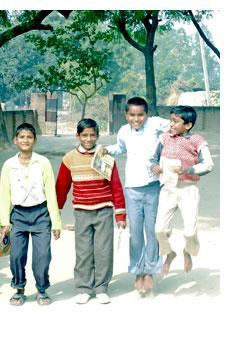 Though the economy is hurting, volunteering in the United States jumped last year at the fastest rate in six years. At least 63 million gave of their time and energy. "What we're seeing is the depth of the American spirit and generosity at its best," says Patrick Corvington, CEO of the Corporation for National and Community Service, the federal agency that is the nation's largest grantmaker supporting service and volunteering. Many organizations are responding to the demand by offering more service options, creating leadership positions for volunteers, and providing virtual service opportunities to appeal to baby boomers, retirees, and young people.
Though the economy is hurting, volunteering in the United States jumped last year at the fastest rate in six years. At least 63 million gave of their time and energy. "What we're seeing is the depth of the American spirit and generosity at its best," says Patrick Corvington, CEO of the Corporation for National and Community Service, the federal agency that is the nation's largest grantmaker supporting service and volunteering. Many organizations are responding to the demand by offering more service options, creating leadership positions for volunteers, and providing virtual service opportunities to appeal to baby boomers, retirees, and young people.
"Volunteering patterns have changed," says Barb Quaintance, who heads up volunteer and civic engagement at AARP. Boomers, in particular, want more say in how they serve. In 2009, AARP started Create the Good, a network where people and nonprofits can connect around volunteering, "whether you have five minutes, five hours, or five days," says Quaintance.
The challenge for all volunteers is finding the best fit for themselves. "Look to creditable organizations or ones you know," Quaintance recommends. Regardless of your tastes, temperament, or availability, a wide range of opportunities can be found, each offering its own rewards.
Disaster Relief
For those who seek an adrenaline rush and have a flexible schedule, emergency response groups may be an appealing option. The largest is the American Red Cross, which has more than 90,000 disaster workers, 93 percent of whom are volunteers. (Training is conducted at each of the 700-plus chapters.) Some 55,000 volunteers can be deployed nationwide; the rest can be mobilized only within their home area. "Volunteer in your local community first," advises Anita Foster, chief communications officer for the American Red Cross in Dallas. "Getting a call at 3 a.m. to help a family" whose house has burned "is a great way to get your feet wet."
When it's time for the big leagues, the Red Cross depends on volunteers to pick up at a moment's notice. Eleanor Guzik, 71, a nurse practitioner from Ventura, Calif., has been deployed to a number of disasters—a tornado in Georgia, floods in North Dakota, and wildfires in her home state. Helping others when they need it most "is extremely satisfying," Guzik says.
Among other groups providing disaster relief are faith-based organizations like the Salvation Army, which assigns a small subset of its 3.4 million volunteers to emergency response. Since retiring as a Secret Service agent in 1996, Dave Freriks, 71, of Lubbock, Texas, has served as a volunteer at disasters in the American South and West, often for two weeks at a time. His missions have included responding to a fire at a nearby ethanol plant and hurricanes on the Gulf Coast. "It keeps me young, and it keeps me active," Freriks says.
Though the Salvation Army did send volunteers to Haiti after the earthquake in January, it generally responds to U.S. disasters. Volunteers are summoned from the local region to deliver food and drinks to victims and provide emergency shelter, cleanup services, and communications. Catholic Charities USA and Samaritan's Purse an evangelical Christian relief organization, are two other faith-based groups that deploy volunteers when a disaster happens.
A Second Act
The growing trend of skills-based volunteering is "a big change from years past," says Corvington. Baby boomers and others with significant work experience want to segue to new service careers, while nonprofits realize they can leverage this influx of talent to expand their reach. Experience Corps, which has about 2,000 members, connected retired Budget Rent A Car executive Bill Schultz, 65, with an elementary school to help teach children to read in St. Paul, Minn. "You have to find a passion when you retire," says Schultz, who works three days a week at the school and finds it "very rewarding." Lindsay Moore, program spokesperson for Experience Corps, says prospective volunteers must formally apply, submit to a personal interview, and pass a background check. In addition, they must attend an orientation program and get at least 25 hours of training each year.
The largest network for people 55 and older is Senior Corps, which links more than 500,000 individuals to service opportunities in its three programs. The biggest of these, the Retired Senior Volunteer Program (RSVP), has members helping some 60,000 local organizations tutoring and mentoring children, assisting victims of natural disasters, improving the environment, and conducting safety patrols. They also provide business and technical support to nonprofits, including accounting, IT, and fundraising expertise.
Gary LaGrange, a retired Army colonel in Manhattan, Kan., wanted to expand his nonprofit, Help us Learn … Give us Hope. The group collects and ships school supplies and books to children in war-torn nations. RSVP assigned "at least 100 volunteers" and, because of this, more than 400,000 kids have received 520,000 pounds of supplies and 550,000 books, he says.
Senior Corps also offers two other programs: Senior Companions help the elderly maintain independence by assisting them with daily tasks; and Foster Grandparents mentor and tutor children. For other "second act" opportunities, you can try AARP's Create the Good network or its other programs.
An Extended commitment
Got more time? Two full-time gigs to consider include the storied Peace Corps for international posts or the fast-growing AmeriCorps program to serve domestically.
Established under President John F. Kennedy in 1961 to promote goodwill, the Peace Corps has over the years sent nearly 200,000 Americans (who receive three months of training) to serve in 139 countries, from agribusiness workers in Malawi to engineers in Mexico. (Good news for liberal arts grads: Teaching English is in high demand in many part s of the world.) Jennifer Bailey, 29, worked on educational programs in the Dominican Republic, finishing her two-year hitch in May. "I received a world of education and professional work experience with Peace Corps," says Bailey, originally from Ohio, whose tasks ranged from teaching youths about trash management and river cleanup to helping women start income-generating projects. Bailey landed a position as a program analyst in September with the U.S. Department of Housing and Urban Development.
Besides gaining invaluable skills and fluency in foreign languages, Peace Corps volunteers get other perks, including medical and dental benefits, living allowances, student loan help, vacation time, and job placement support. (Check the Web site of the International Volunteer Programs Association for other opportunities to serve abroad.)
If you'd prefer a long-term assignment stateside, you might consider AmeriCorps, which uses volunteers to help address critical needs in education, public safety, health, and the environment. A variety of positions are available, from tutoring young people, assisting crime victims, and building homes to teaching computer skills, restoring parks, and responding to disasters. AmeriCorps plans to expand its ranks from 85,000 volunteers today to 250,000 by 2017.
In general, volunteers sign on for at least a year and can stay on longer if they desire. Dwight Owens, 28, of Collins, Miss., provided practical advice to more than 1,200 people with disabilities on how to manage daily tasks. He also checked that businesses in his area complied with federal laws regarding handicapped access, and helped transition people from nursing facilities and other institutions to their homes. "The program builds character," says Owens, who does all his work from a wheelchair. The former teacher and coach was paralyzed when he was hit by a drunk driver five years ago. The AmeriCorps application process took only a couple of weeks, and while there was some upfront training, Owens was impressed how quickly the program got him out "doing things for people."
Other AmeriCorps avenues include the National Civilian Community Corps, a full-time, team-based residential program for young adults, and AmeriCorps VISTA, focused on helping people out of poverty. All AmeriCorps participants get a modest living allowance, a $5,350 education award to pay for college-related costs (after completing the program), and student loan assistance. While young adults fill most of the ranks, 10 percent of volunteers are 55 or older. (Older adults can transfer their education award to a grandchild or others.) There are three applicants for every position, but you can boost your chances by applying to multiple programs (up to 10) and to rural postings, where there are heavy needs but fewer applicants. Information on all AmeriCorps programs can be found through the organization's main Web site.
Volunteer Vacations
Ever consider combining a vacation with service? After seeing people in need after Hurricane Katrina, "I just wanted to volunteer and do something," says Lisa King, 47, of Arlington, Va., who went to Mexico to build homes with Habitat for Humanity's Global Village program. The experience was so rewarding that King has taken annual, two-week volunteer vacations since. Last February, she helped build a town of modified mud huts in Ethiopia—pouring foundations, erecting the wooden frames, and even tossing mud to obefortify one home's exterior.
Habitat, one of the largest organizers of volunteer vacations, has hundreds of projects around the world involving home construction and renovation, or disaster relief. No experience is necessary, but participants should have "an interest, curiosity, and commitment to serve," says David Minich, Habitat's global volunteer director.
Volunteers pay for their airfare and, on average, about $100 a day to cover building supplies, room and board, and transportation within the country. Since most projects require manual labor, you should be in good health. "I can honestly say that I have never physically worked so hard" or "enjoyed myself so much," says Salli Innes, 57, a schoolteacher from Brookeville, Md., who built houses in Guatemala two years ago. Her husband, Rich, caught a free ride by serving as group leader.
If you have less vacation time, you might try Globe Aware, which hosts one-week volunteer programs around the world. About 15 percent of the group's roughly 4,500 vacationers are families. "We're one of the few nonprofits that allow" them, says spokesperson Catherine McMillan. Families with kids as young as 6 months travel to such places as Peru, Costa Rica, and Ghana for roughly $1,250 a person, plus airfare. Volunteers build recycling areas, clear paths in the rain forest, make cheese, milk cows, and take part in many other projects. "It's kind of like a vacation that needs you," says McMillan.
Volunteer vacations are not for those who like to be pampered. But if experiencing a new culture, "meeting the people, working with the families, and feeling like what you do matters," they are a great option, King says. It's also less expensive than a standard vacation. King went to India for two weeks for $1,200, plus airfare, for example. And thanks to a handy Global Village widget, she solicited donations from friends and colleagues that helped defray some of her costs.
To learn about other volunteer vacations, you can check out Global Volunteers, Idealist.org, and Charity Guide.
Virtual helping hands
Chicagoan Summer Johansson, a 33-year-old student finance adviser, wanted to volunteer but couldn't fit traditional commitments into her schedule. The solution? In 2008, Johansson signed on to the online volunteering service of United Nations Volunteers, which looks for virtual assistance for a wide variety of tasks, including project development, design, research, writing, translation, and coaching. Johansson serves as a tutor and head coordinator with RESPECT University, which offers free post-secondary courses to refugees and displaced persons. She develops the syllabus, lessons, and assignments, then E-mails them to a ground liaison. "I currently have courses running in Afghanistan, Uganda, and Nepal," she says. Overall, the program used some 9,400 online volunteers of all ages in 2009. "All they need is a computer, an Internet connection, and skills," says Elise Bouvet of United Nations Volunteers, "and a commitment to making a real difference to peace and development."
While virtual volunteering may not offer personal one-on-one contact, it's more flexible than other options and is a great "CV enhancer," says Johansson. A number of sites can help you find virtual opportunities, including www.volunteermatch.org, which recruits for more than 74,000 organizations, and the HandsOn Network, an arm of the Points of Light Institute, which represents more than 70,000 corporate, faith, and nonprofit organizations. Finally, DoSomething.org specifically matches young people with service options, over 1,700 of which are virtual.
DIY Volunteering
A fixture in her Wheaton, Md., community, Kathleen Michels is often seen yanking out invasive plants along a local creek, caring for a nearby community garden, or working with groups she had a hand in forming. This includes her neighborhood civic association and a coalition to "push back against the paving of our athletic fields with rocks, plastic, and pulverized tires"—that is, artificial turf, she says.
Ask the National Institutes of Health neuroscientist, wife, and mother why she starts these and other efforts, she simply says: "It needed to be done." Michels, 52, figures she puts in 40 hours a month volunteering.
You can find many valuable tools online to advance your own cause, such as AARP's Create the Good program. It has created a slew of downloadable how-to guides—from organizing river cleanups and holding school supply drives to helping oth ers get good healthcare.
Marlene Ellis, 56, of Arlington, Va., last fall initiated her own food drive for a local food bank. Thanks to an AARP starter kit that provided suggestions, bags for food collection, and fliers to post, Ellis was able to collect 127 pounds of food in about a week. "I was so happy" when she delivered it to the food bank, she says. "It is nice to see how much I can accomplish on my own."
DIY projects can be time-consuming, so Michels recommends bringing in friends and neighbors to help when possible. "People respond to passion, commitment, and reasoned arguments," she says.
The upsides of self-directed work are immediately apparent. It's "usually more intellectually engaging since you are organizing and problem-solving and doing research" on your own, Michels notes. She believes she is testament that even shy people can tackle and solve problems in the community or the world, saying, "Success breeds confidence."
Copyright © 2010 U.S.News & World Report LP All rights reserved.
The rise of volunteer tourism: Globe Aware featured in global edition of the New York Times
On Friday, September 17, 2010, Globe Aware was featured in the global edition of the New York Times. Below is the article, including an interview with Catherine McMillan, Globe Aware’s vice president of volunteer communications.
The rise of volunteer tourism: Travelers help out while having fun
In today’s interconnected world, being environmentally responsible has evolved from fringe advocacy to mainstream behavior. Many travelers are also more aware of helping those less fortunate than themselves.
One emerging trend is volunteer tourism, or voluntourism, as it is known. Altruistic visitors partake in such projects as helping in orphanages or schools, teaching English or doing repairs and working on community projects.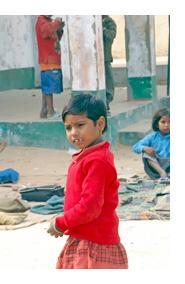 According to the International Ecotourism Society, voluntourism is taking shape as one of the fastest-growing markets in tourism today.
According to the International Ecotourism Society, voluntourism is taking shape as one of the fastest-growing markets in tourism today.
Globe Aware, a nonprofit organization based in Texas, organizes volunteer programs all over the world. ‘‘Our mission is twofold — to promote sustainability through volunteer work projects and to promote cultural understanding,’’ explains Catherine McMillan, Globe Aware’s vice president of volunteer communications. The organization specializes in connecting short-term volunteers with communities that have a variety of needs.
‘‘It isn’t just work,’’ she says. ‘‘As we say here, ‘Have fun and help people.’’’ This type of travel is very different from the normal tourist experience, adds McMillan. ‘‘You get a much deeper, nuanced experience of the culture of the place you are visiting,’’ she points out. ‘‘You create real relationships with the locals.’’ Volunteers experience both the beauties and the challenges that local people face, she adds. In Cambodia, for example, Globe Aware projects range from working with schools and Buddhist monasteries to building and distributing wheelchairs to land-mine victims.
One volunteer, who came to Globe Aware through the Make-A-Wish Foundation, had a condition in which he lost control of the movement in his legs. ‘‘He had experimental surgery and regained mobility, but his wish was to help give the gift of mobility to others,’’ says McMillan. ‘‘He went with his parents to Cambodia last year and built wheelchairs.’’ The 2010 Ecotourism and Sustainable Tourism Conference, held Sept. 8-10 in Portland, Oregon, featured Bruce Poon Tip as keynote speaker.
Poon Tip is the founder of Gap Adventures, an adventure travel company that promotes sustainable tourism. ‘‘We love changing people’s lives through travel,’’ said Poon Tip, ‘‘and ESTC is a perfect forum to help us advance that goal.’’ He explains that the company has proven through initiatives like its voluntourism projects that sustainability and travel needn’t be mutually exclusive.
Smart travel that respects local ecosystems, economies and communities not only provides a more exciting experience for travelers, but also is simply the right thing to do, says Poon Tip.
Hong Kong-based Kit Sinclair, an occupational therapist and ambassador for the World Federation of Occupational Therapists, frequently offers her expertise when she travels. ‘‘When I visit a city, I often offer to provide lectures, meet with students, visit hospitals or clinics, and discuss with staff about their work and their patients,’’ says Sinclair, who has done this throughout China and other parts of Asia.
While visiting Chiang Mai in Thailand a few years ago, Sinclair had a memorable adventure, ‘‘eating a local dish of worms/larvae at a roadside restaurant, heading into the hills for the most fantastic massage at a local hot springs and enjoying the company of local health care professionals, learning their culture, understanding their concerns and having a great time.’’ Another volunteer tourism organization, with offices in Bangkok and Luang Prabang, North by North-East Travel, specializes in trips to Southeast Asia. The company says it ‘‘provides meaningful volunteer work by aiming to empower communities through the transfer of vocational skills and leadership abilities, so they can benefit directly from tourism.’’ North by North-East has facilitated a number of projects in both Thailand and Laos, from educational ones to providing tsunami relief. Responsible tourism, it says, is not imposing one’s culture on others or conforming totally to a local culture. It is about a respectful and equal exchange of values.
Before jumping on the voluntourism bandwagon, says Globe Aware’s McMillan, travelers should make sure that the organization they are working with is legitimate and that they understand how donations are used for the benefit of the community.
‘‘Just handing out funds creates dependency, and you don’t want to do that,’’ McMillan points out. ‘‘Potential volunteers should be able to ask for references from past volunteer participants.’’ For Sinclair, the occupational therapist, the rewards of service ‘‘are in increased knowledge of the region and its health care needs, in sharing global perspectives with my local counterparts and in getting to know some really fantastic people.’’
The rise of volunteer tourism: Globe Aware featured in global edition of the New York Times
- Source: New York Times
On Friday, September 17, 2010, Globe Aware was featured in the global edition of the New York Times. Below is the article, including an interview with Catherine McMillan, Globe Aware’s vice president of volunteer communications.
The rise of volunteer tourism: Travelers help out while having fun
In today’s interconnected world, being environmentally responsible has evolved from fringe advocacy to mainstream behavior. Many travelers are also more aware of helping those less fortunate than themselves.
One emerging trend is volunteer tourism, or voluntourism, as it is known. Altruistic visitors partake in such projects as helping in orphanages or schools, teaching English or doing repairs and working on community projects. According to the International Ecotourism Society, voluntourism is taking shape as one of the fastest-growing markets in tourism today.
According to the International Ecotourism Society, voluntourism is taking shape as one of the fastest-growing markets in tourism today.
Globe Aware, a nonprofit organization based in Texas, organizes volunteer programs all over the world. ‘‘Our mission is twofold — to promote sustainability through volunteer work projects and to promote cultural understanding,’’ explains Catherine McMillan, Globe Aware’s vice president of volunteer communications. The organization specializes in connecting short-term volunteers with communities that have a variety of needs.
‘‘It isn’t just work,’’ she says. ‘‘As we say here, ‘Have fun and help people.’’’ This type of travel is very different from the normal tourist experience, adds McMillan. ‘‘You get a much deeper, nuanced experience of the culture of the place you are visiting,’’ she points out. ‘‘You create real relationships with the locals.’’ Volunteers experience both the beauties and the challenges that local people face, she adds. In Cambodia, for example, Globe Aware projects range from working with schools and Buddhist monasteries to building and distributing wheelchairs to land-mine victims.
One volunteer, who came to Globe Aware through the Make-A-Wish Foundation, had a condition in which he lost control of the movement in his legs. ‘‘He had experimental surgery and regained mobility, but his wish was to help give the gift of mobility to others,’’ says McMillan. ‘‘He went with his parents to Cambodia last year and built wheelchairs.’’ The 2010 Ecotourism and Sustainable Tourism Conference, held Sept. 8-10 in Portland, Oregon, featured Bruce Poon Tip as keynote speaker.
Poon Tip is the founder of Gap Adventures, an adventure travel company that promotes sustainable tourism. ‘‘We love changing people’s lives through travel,’’ said Poon Tip, ‘‘and ESTC is a perfect forum to help us advance that goal.’’ He explains that the company has proven through initiatives like its voluntourism projects that sustainability and travel needn’t be mutually exclusive.
Smart travel that respects local ecosystems, economies and communities not only provides a more exciting experience for travelers, but also is simply the right thing to do, says Poon Tip.
Hong Kong-based Kit Sinclair, an occupational therapist and ambassador for the World Federation of Occupational Therapists, frequently offers her expertise when she travels. ‘‘When I visit a city, I often offer to provide lectures, meet with students, visit hospitals or clinics, and discuss with staff about their work and their patients,’’ says Sinclair, who has done this throughout China and other parts of Asia.
While visiting Chiang Mai in Thailand a few years ago, Sinclair had a memorable adventure, ‘‘eating a local dish of worms/larvae at a roadside restaurant, heading into the hills for the most fantastic massage at a local hot springs and enjoying the company of local health care professionals, learning their culture, understanding their concerns and having a great time.’’ Another volunteer tourism organization, with offices in Bangkok and Luang Prabang, North by North-East Travel, specializes in trips to Southeast Asia. The company says it ‘‘provides meaningful volunteer work by aiming to empower communities through the transfer of vocational skills and leadership abilities, so they can benefit directly from tourism.’’ North by North-East has facilitated a number of projects in both Thailand and Laos, from educational ones to providing tsunami relief. Responsible tourism, it says, is not imposing one’s culture on others or conforming totally to a local culture. It is about a respectful and equal exchange of values.
Before jumping on the voluntourism bandwagon, says Globe Aware’s McMillan, travelers should make sure that the organization they are working with is legitimate and that they understand how donations are used for the benefit of the community.
‘‘Just handing out funds creates dependency, and you don’t want to do that,’’ McMillan points out. ‘‘Potential volunteers should be able to ask for references from past volunteer participants.’’ For Sinclair, the occupational therapist, the rewards of service ‘‘are in increased knowledge of the region and its health care needs, in sharing global perspectives with my local counterparts and in getting to know some really fantastic people.’’
Condé Nast Traveler: Globe Aware in Ghana
Chicago Healthcare Software Salesman and Globe Aware Volunteer Vacationer Named Chief of Ghana Village
Special ceremony held to make Peter Sheehan a chief of Mafi-Wudukpo, a rural community located within the North Tongu District of the Volta region of Ghana.
Peter, and his wife Colleen Sheehan, 29, a senior associate producer at Oprah Winfrey Show, were in Ghana with Globe Aware (www.globeaware.org) on a one-week volunteer vacation, July 3-9, 2010. Colleen taught in the village while Peter helped construct sanitation facilities, including digging trenches, laying conduits, drainage, and mixing concrete.
If you would like more information about taking a volunteer vacation to Costa Rica, Romania, Peru, China, India, or you are interested in voluntourism in another country or on another continent, please visit Globe Aware's Destinations Gallery for program and trip descriptions, dates and Minimum Contribution Fees.
Globe Aware Volunteer Vacations in the Spotlight
Globe Aware continues to reach out to parties, partners and individuals interested in travel that makes a difference. Kimberly Haley-Coleman, Executive Director, Globe Aware was recently featured in a profile series at WorldNomads.com, a popular web-resource with a focus on keeping travelers traveling safely:
1. Who are you? Brief description of trips you offer
Globe Aware is a nonprofit that organizes one week volunteer programs in communities all around the world. Our focus is to promote cultural awareness and sustainability. For us, the concept of sustainability is to help others stand on their own two feet; to teach skills rather than reliance. For example, we build schools in Ghana, homes in Vietnam, assemble wheelchairs for landmine victims in Cambodia. All of our volunteer programs are designed to be safe, culturally interesting, genuinely beneficial to a needy community, and involve significant interaction with the host community. Globe Aware is not a foundation that focuses on giving out charity, but rather an organization which focuses on creating self reliance.
2. How do you define Responsible Travel?
Responsible travel, for us, means ensuring that volunteers are engaged in empowering the host communities and ensuring they are involved in project implementation so that they know how to do them. It also means letting the local community identify where they think they need help and what kind of solution they want. While Globe Aware's direct, financial assistance benefits the community economically, it is the the actual involvement and collaboration between the volunteers and the community that is of the greatest mutual benefit. Responsible travel also means respecting the culture and heritage of the community in which you are traveling. A volunteer's goal should not be to change the host community, but rather to work side by side on projects the community finds meaningful.
3. What does your company do to make sure it travels responsibly?
We promote responsible travel by ensuring that the communities in which we work are the ones choosing which projects and initiatives our volunteer work on. We do have set requirements for potential projects - that they be safe, culturally interesting, and genuinely beneficial, but beyond that we let the host communities, the experts on their own culture and needs, tell us how we can help them. Additionally, Globe Aware offsets its carbon emissions with Carbonfund.org, the country's leading carbon offset organization. Our carbon footprint is estimated at less than 70 tons annually, and we have chosen to support carbon-reducing projects in renewable energy to offset the CO2 that is produced in running our offices worldwide, from powering our offices to the transportation used to get to and from our work sites. This commitment places Globe Aware as an environmental leader in the volunteer abroad community and demonstrates proactive steps being taken in the fight against global climate change.
4. Tell us about a successful initiative. And an unsuccessful one - what did you learn?
A few of our most recent successful initiatives have been the construction of school buildings in rural Ghana. These children in this community did not have good access to education because of lack of facilities. These school buildings have changed that and now these kids are poised to pursue an education and work skills and break free from the cycle of poverty. Less successful has been promoting projects in communities that are more than 6 hours from the airport of entry. Our primary volunteers tend to be working professionals and they normally only have about a week to take off to participate in a program. Our experience has been that project sites that are too far from the airport of entry tend to be harder to promote to short term volunteers, even if it is a really great project in a needy community.
5. What’s some advice you can offer to travelers wanting to travel responsibly?
Travelers wanting to travel responsibly should learn about the culture of the community they are going to visit before they set off for the airport. When contemplating bringing additional donations, think about just bringing some extra funds with you and buying supplies at a local shop. This helps the community in a number of ways - they get needed supplies and local businesses are generating revenue. Another thing to consider is watching your waste. Use a refillable water bottle and the like. Trash has to go somewhere and in developing communities there is a lack of sanitation services to responsibly remove waste. Outside of volunteering, travelers should opt to stay at locally run hotels and eat at locally owned restaurants. By helping locally owned businesses you are directly supporting the community and not large international conglomerates that overrun popular tourist destinations. In essence, put your bucks where they count. However, avoid handing out direct monetary donations. You don't want to create dependency or reliance on handouts.
If you would like more information about taking a volunteer vacation to Costa Rica, Romania, Peru, China, India, or you are interested in voluntourism in another country or on another continent, please visit Globe Aware's Destinations Gallery for program and trip descriptions, dates and Minimum Contribution Fees.
- Globe Aware in WSJ: Voluntour at Home and Abroad
- Contribute 5 Minutes to Helping right now by voting for Globe Aware!
- Globe Aware on CNN: Finding volunteer trips that actually help
- Globe Aware featured as "feel-good" volunteer vacation provider
- Globe Aware Awards Students with Scholarship
- Taking the Road Less Traveled
- Forget the Ferrari: travel can transform your life. Here are 10 trips to make it happen.
- The Latin American and Caribbean Student Health Organization, Harvard School of Public Health community, generously donate funds to Globe Aware
Page 6 of 13
